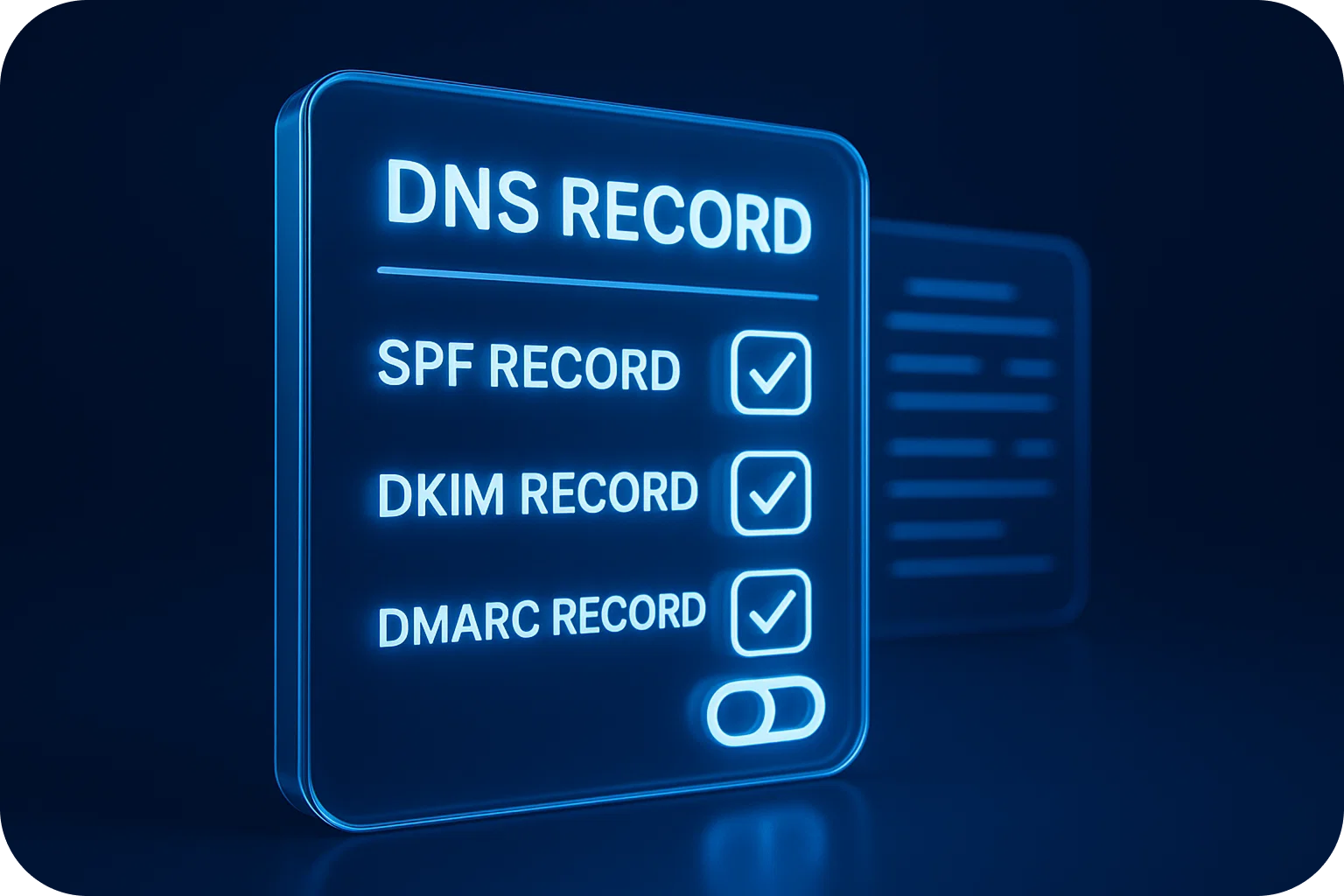Email Infrastructure Audits: The Quarterly Health Check Your Domains Need

Your cold email campaigns are only as strong as the infrastructure supporting them. While most sales and marketing teams obsess over subject lines, personalization tokens, and follow-up sequences, they often overlook the foundation that determines whether their emails even reach the inbox: their email infrastructure.
Just like you wouldn't skip regular health checkups, your sender domains need consistent monitoring and maintenance. Quarterly email infrastructure audits are the preventive medicine that keeps your deliverability healthy and your sender reputation intact.
Why Your Email Infrastructure Needs Regular Audits
Think of your email infrastructure as a high-performance vehicle. You can have the best driver and the most efficient route, but if you neglect oil changes and tire rotations, you'll eventually break down on the highway.
The same principle applies to your sender domains. DNS records drift, authentication protocols update, and inbox providers constantly refine their filtering algorithms. What worked perfectly three months ago might be quietly sabotaging your deliverability today.
The hidden cost of neglect is substantial. A degraded sender reputation doesn't announce itself with error messages. Instead, your emails silently slip from the inbox to the spam folder, and your team wonders why response rates have mysteriously declined.
Regular deliverability audits catch these issues before they compound into serious problems that require months to repair.
The Core Components of an Email Infrastructure Audit
A comprehensive quarterly audit examines every element that influences how inbox providers perceive and handle your emails.
DNS Authentication Records
Your DNS records are the credentials that prove you're authorized to send emails from your domains. During each audit, verify that all authentication protocols are properly configured:
SPF records should include all legitimate sending sources without exceeding the 10 DNS lookup limit. As your tech stack evolves, it's easy to accumulate outdated entries that bloat your SPF record and cause authentication failures.
DKIM signatures must be present and valid. Check that your private keys haven't expired and that your sending infrastructure is correctly signing outgoing messages.
DMARC policies need regular review to ensure they're neither too lenient (allowing spoofing) nor too strict (blocking legitimate emails). Monitor your DMARC reports to identify authentication issues before they impact deliverability.
Domain and IP Reputation Monitoring
Your sender reputation is the cumulative score inbox providers assign based on your sending behavior. Quarterly audits should include:
- Checking your domains against major blacklists and blocklists
- Reviewing sender scores across multiple reputation services
- Analyzing bounce rates, spam complaint rates, and engagement metrics
- Identifying any sudden reputation drops that require investigation
Even if you're following best practices, technical issues or compromised accounts can damage your reputation without your knowledge.
Email Volume and Sending Patterns
Inbox providers watch for sudden changes in sending behavior that might indicate a compromised account or spammy practices.
Review your sending volume trends across all domains and email accounts. Are you maintaining consistent sending patterns, or do you have erratic spikes that might trigger filters? Are you respecting the recommended limits of 20 emails per inbox per day and 3 inboxes per domain?
Audit your domain rotation strategy to ensure you're distributing volume appropriately and not overloading any single sender domain.
Inbox Placement Testing
The ultimate measure of infrastructure health is where your emails actually land. Conduct seed list tests across major inbox providers:
- Gmail (personal and Workspace accounts)
- Microsoft Outlook and Office 365
- Yahoo Mail
- Apple Mail
- Other relevant providers for your target audience
Test from each of your active sending domains to identify any that have developed deliverability issues. A domain performing poorly in these tests needs immediate attention before you send another campaign from it.
Warm-up Status and Health
If you're using email warm-up services or protocols, verify that all accounts are maintaining healthy warm-up patterns. Check for:
- Accounts that have stalled in their warm-up progression
- Unusual bounce or spam complaint rates during warm-up
- Proper engagement signals are being generated
- Appropriate volume increases over time
Accounts that aren't warming up correctly will struggle with deliverability when you start sending real campaigns.
Common Issues Discovered During Audits
Quarterly audits consistently uncover several recurring problems that quietly erode deliverability:
Broken DNS records are surprisingly common. A simple typo in a DNS update, an expired DKIM key, or an incomplete SPF record can cause authentication failures that land your emails in spam.
Forgotten subdomains that were set up for testing or temporary campaigns often linger without proper monitoring. These orphaned domains can develop reputation issues that affect your entire domain ecosystem.
Blacklist appearances sometimes happen through no fault of your own. Shared IP addresses, domain spoofing by bad actors, or false positives can land you on blocklists that require manual removal requests.
Configuration drift occurs when team members make changes to the sending infrastructure without updating documentation or coordinating with other systems. This leads to authentication mismatches and deliverability problems.
Volume creep happens gradually as teams slowly increase sending without realizing they've exceeded recommended limits. By the time deliverability suffers, the damage is already done.
Creating Your Quarterly Audit Checklist
Standardize your audit process with a comprehensive checklist that ensures nothing gets overlooked:
Week 1: Technical Infrastructure Review
- Verify all SPF, DKIM, and DMARC records
- Check DNS propagation across global servers
- Review SSL certificates for email-related domains
- Test email authentication using multiple validation tools
Week 2: Reputation and Deliverability Analysis
- Run blacklist checks on all sending domains and IPs
- Review sender scores and reputation metrics
- Analyze bounce rates, complaint rates, and unsubscribe rates
- Conduct inbox placement tests across major providers
Week 3: Volume and Pattern Assessment
- Review sending volume trends by domain and account
- Identify any unusual spikes or drops in activity
- Verify compliance with volume limits and best practices
- Assess domain rotation effectiveness
Week 4: Optimization and Remediation
- Address any issues discovered in weeks 1-3
- Update documentation and configuration records
- Implement improvements to infrastructure or processes
- Schedule follow-up tests to verify fixes
Turning Audit Insights Into Action
Discovering issues during an audit is only valuable if you act on the findings. Prioritize remediation based on impact and urgency:
Critical issues like blacklist appearances or broken authentication records demand immediate attention. These can completely block your emails and require same-day fixes.
High-priority items such as degraded sender reputation or volume violations should be addressed within the week. These problems worsen over time and become harder to fix with delay.
Medium-priority improvements like optimizing DNS records or refining warm-up protocols can be scheduled into your normal workflow over the following month.
Low-priority optimizations such as documentation updates or process improvements can be tackled as time permits but shouldn't be ignored indefinitely.
The ROI of Proactive Infrastructure Maintenance
Quarterly audits require time and attention, but the return on investment is substantial. Consider the alternative: reactive firefighting when deliverability suddenly tanks.
Preventive maintenance costs hours. Emergency reputation repair costs weeks or months, along with the revenue lost from campaigns that never reached the inbox.
Teams that conduct regular audits maintain consistently high inbox placement rates, avoid costly deliverability crises, and scale their outreach with confidence. They catch small issues before they become big problems and maintain the sender reputation that took months to build.
Building Infrastructure Audits Into Your Workflow
Make quarterly audits a non-negotiable part of your email operations. Schedule them at the start of each quarter, assign clear ownership, and treat them with the same importance as campaign planning or list building.
Your email infrastructure is the foundation of your entire outreach strategy. Regular health checks ensure that the foundation remains solid, keeping your emails in the inbox and your campaigns performing at their peak.
Don't wait for deliverability problems to force your hand. Schedule your first quarterly audit today and give your domains the preventive care they need to support your growth.
More articles
Get started now




%201.png)




.png)
